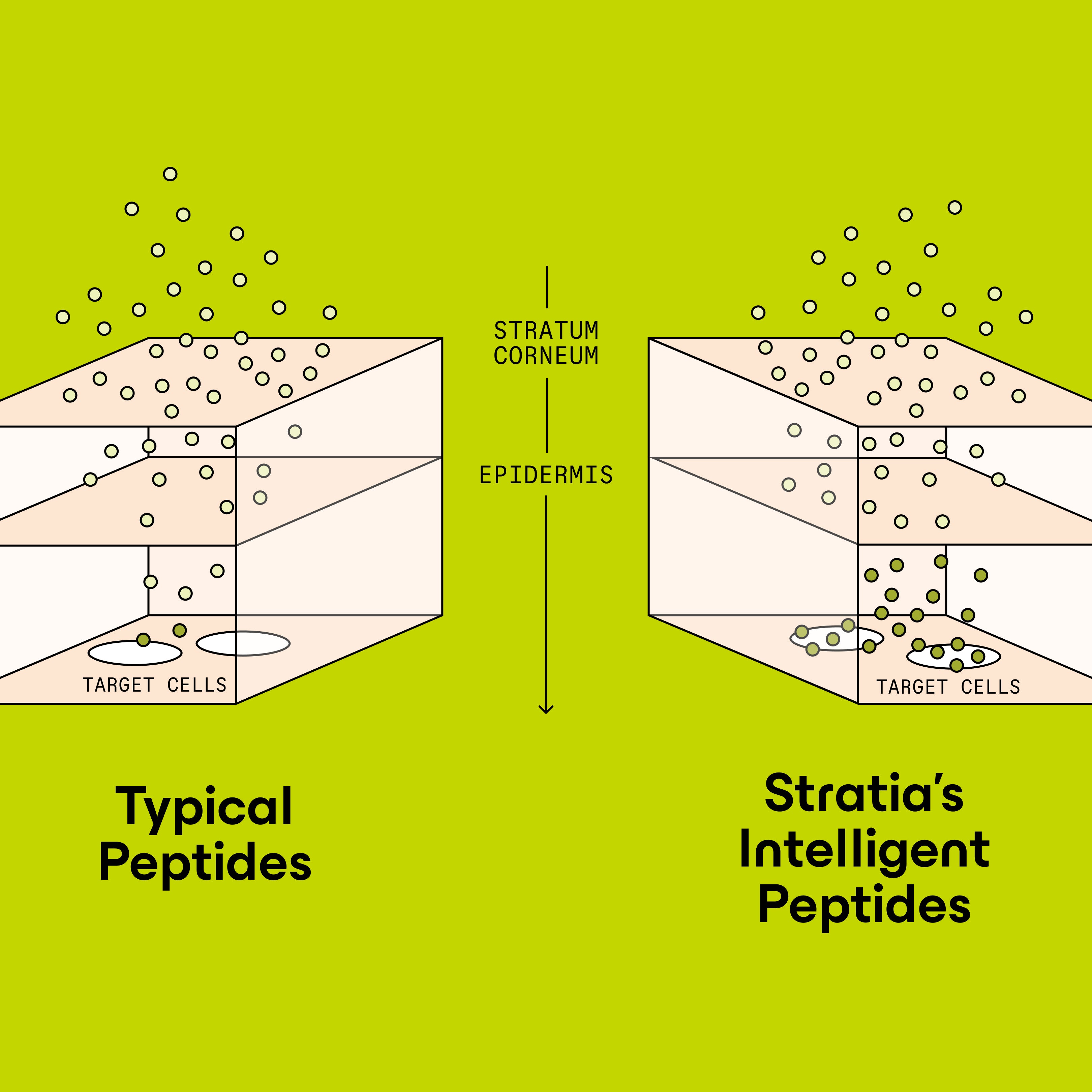Stratia’s newest product, a peptide-enriched daily moisturizer, took me several years of research and development to nail down. I’ve known I wanted to work with peptides for a long time, but it took years to find the right ones (plus another year after that to perfect the formula).
I will never stop nerding out about how cool the peptides in Interface are, so please bear with me as I gush about these incredible ingredients.
What are peptides?
Peptides are short chains of amino acids and are found everywhere throughout our body. If you think of amino acids like Legos that come in 20 different colors and shapes, then peptides are a short stack of a few different Legos. (If you were to stack a bunch of different Lego peptides one on top of another, you’d get a protein.)
Bioactive peptides have a real, measurable function on the way our bodies behave. For instance, enzyme-inhibiting peptides can block certain enzymes from carrying out a biological process (like making too much melanin), while our body’s natural antimicrobial peptides can kill bacteria, fungi, and even viruses.
There are countless peptides in the body, and even more that can be made in a lab. Each peptide has a unique and specific function, so developing Interface meant being extremely picky about which ones to include.
Which peptides are used in Interface?
Interface uses five different bioactives peptides of two different categories: signaling peptides and carrier peptides.
Signaling peptides work as messengers to tell the body to produce more of something. When your skin is injured, your body will naturally break down proteins from the extracellular matrix to create its own signaling peptides, telling your skin to produce more of certain types of proteins to heal or strengthen the skin.
Interface has three signaling peptides:
-
Cu-Palmitoyl Heptapeptide: stimulates production of collagen and elastin, which are responsible for skin’s firmness and elasticity
-
Palmitoyl Heptapetide-27: upregulates filaggrin and loricrin, two essential proteins in a healthy skin barrier
-
Palmitoyl Oligopeptide-78: increases production of keratin, the key protein in stratum corneum barrier cells
Carrier peptides are like microscopic taxi cabs, transporting whatever is attached to a specific location. In the case of Interface, our signaling peptides are encapsulated within a biocompatible polymer shell, which is then lined with carrier peptides to get those active peptides exactly where they need to go.
Interface has two carrier peptides:
-
Heptapeptide-15 Palmitate: targets fibroblasts, the dermal cells that generate collagen and elastin (carrier for signaling peptide #1)
-
Palmitoyl Octapeptide-24: targets specific receptors on keratinocytes, the skin cells that form the epidermis (carrier for signaling peptides #2 and #3)
So what does that mean for my skin?
The active peptides help firm loose skin, fade fine lines, and strengthen the skin’s moisture barrier. The carrier peptides make sure that they get exactly where they need to go, meaning they’re more effective at lower concentrations.The encapsulation means the peptides stay stable, safe, and protected in the bottle, and that they won’t react with any other skincare products you use in your routine.
I also spent a ton of time on the formula itself. I landed on this nourishing gel-cream texture that melts into the skin, to leave you moisturized and glowing but not greasy.
I hope you and your skin love it!

Leave a comment